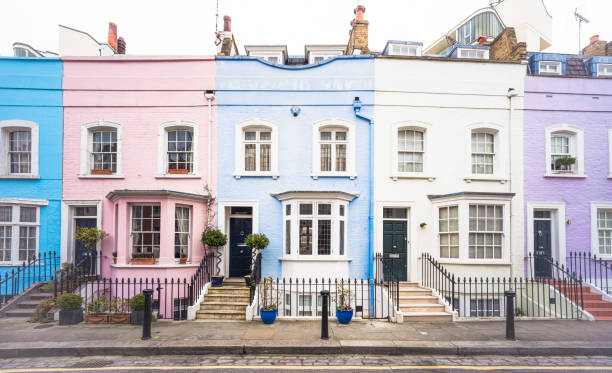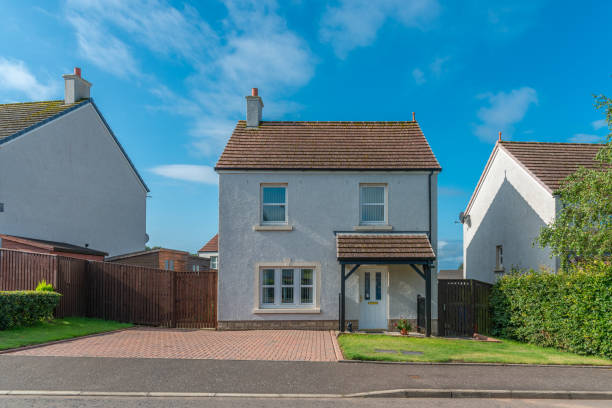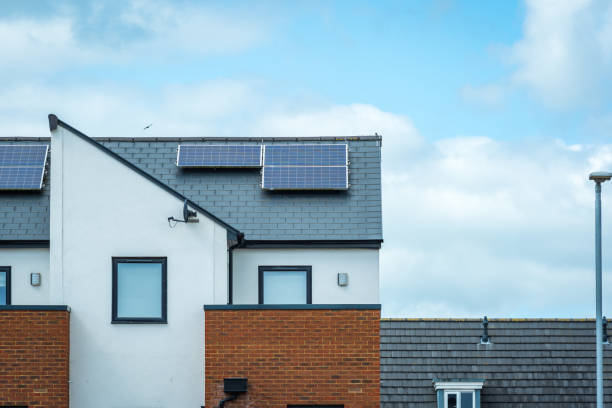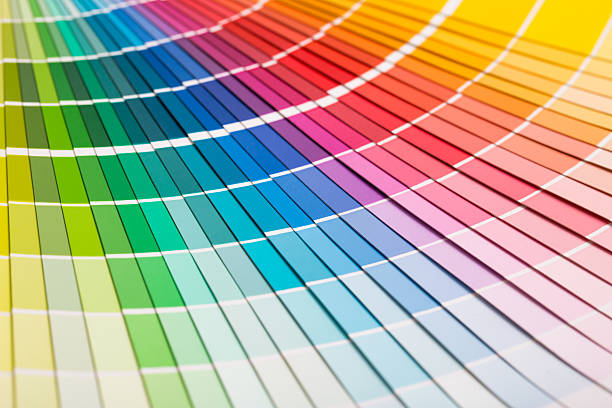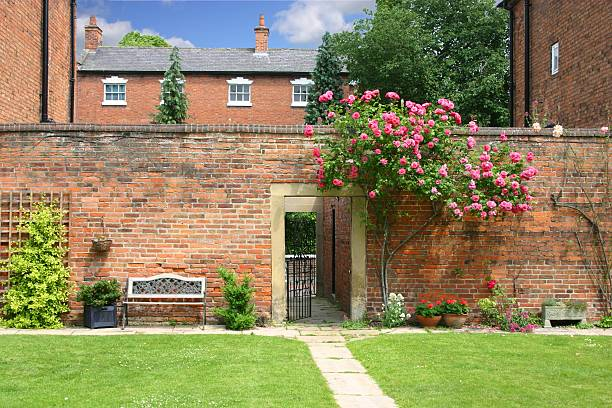The world of architecture and construction is not merely about erecting structures but also about crafting breathtaking visual experiences—using vibrant colour in rendering is a powerful tool to present just that.
That’s why, in this comprehensive guide, we’ll be talking about the art of coloured rendering! Moreover, we’ll cover its various aspects, all the way from different types of rendering to the cost factors and benefits.
In fact, at the end of this coloured rendering guide, you’ll be able to harness the magic of colour and transformation!
What Is Coloured Rendering?
Colour rendering is a technique that adds pigment to the rendering material applied to a building’s exterior or interior surfaces, allowing for a vibrancy the original build cannot achieve.
This transformative process makes a world of difference in how a structure is perceived – colour, after all, is a powerful tool.
By carefully selecting and applying different shades, architects and designers can breathe life into their designs, and colour rendering is, therefore, a life-giving process.
What Are The Different Types Of Rendering? Colour Rendering Techniques
Coloured rendering comes in varying forms, each with unique characteristics and applications. Let’s take a look at some of the most commonly used ones:
Silicone Render
Silicone rendering is quite well-known for its exceptional durability and weather resistance. It’s a popular option for external applications since it withstands harsh environmental conditions.
This rendering is also available in a wide range of shades, making it a versatile (and appealing) option for architects and builders looking to create visually striking facades.
Acrylic
Acrylic rendering is a water-based system with quick drying times and is easy to apply. It is perfect for surfaces like walls, making it a versatile decision for various projects and products. Acrylic renders can also be tinted to achieve the desired colours, giving architects and designers more creative freedom.
Mineral Based
Mineral-based rendering is a traditional rendering method that uses natural materials like lime and cement. It is appreciated for its breathability and suitability for historical restoration projects.
While it might not be as expansive as other renderings, it presents a timeless and authentic appearance. Although it won’t be as vibrant as the other options, sometimes you want that classic look – and this is perfect for that.
Monocouche Render
Monocouche rendering is a single-layer, cement-based exterior rendering system. This is one of the colour rendering techniques best known for its convenience and aesthetic versatility, with different textures and shades. This render has a durable and weather-resistant finish to walls and bricks, making it a popular choice for modern construction projects seeking protection and visual appeal.
Thin Renders
Thin coat renders are, as the name suggests, applied in a thinner layer compared to their counterparts. They are often acrylic or silicone-based and are favoured since they are flexible and adhesive. Thin coat renders also come in many colours, making them an excellent choice for modern architectural designs and vibrant visuals.
Thick Renders
Thick coat rendering is applied in thicker layers, typically mineral-based materials. They are robust, crack-resistant, and well-suited for heavy-duty applications. While the colour options for colour rendering techniques like this may be somewhat limited (as is generally the case for mineral renders), they provide textured finishes that add depth and character to a building’s exterior.
These types of rendering open up a world of possibilities for adding vibrancy through standard colours to your architectural and construction projects.
By selecting the right type based on your project’s requirements, you can achieve the desired visual impact, and we hope you can find the best one out of the ones we’ve shared in this coloured rendering guide.
What Is The Range Of Colours Available For Rendering? Colour Rendering Examples
Another thing that this coloured rendering guide must share is the range of colours that rendering offers. That’s why we’ve compiled a list of the possible tonal options you can choose:
- Neutral Tones: These earthy and subtle tones, such as beige, taupe, and grey, create a classic and timeless appearance suitable for various architectural styles.
- Vibrant Hues: Bold options like red, blue, and green can add a splash of energy and personality to a building, making it stand out and leave a lasting impression.
- Pastels: Light pastel shades, including soft pinks, blues, and yellows, are ideal for achieving a gentle and inviting look, often used in residential properties.
- Greens and Browns: These natural shades can help a building blend harmoniously with its surrounding area, especially in rural or woodland settings.
- Warm Tones: Warm colours like terracotta, ochre, and rust can create a cosy and inviting atmosphere, making them popular for Mediterranean-inspired designs.
- Cool Greys: Shades of grey, from light to dark, provide a modern and minimalist aesthetic suitable for contemporary architecture.
- Custom Colours: Many rendering systems allow for custom colour matching, enabling architects to coordinate precisely with a project’s overall design theme, even if the price can be slightly higher.
- Tints and Textures: Beyond solid choices, rendering can also be textured or tinted, creating a unique appearance with depth and character.
The choice of picking one of these many colour rendering examples is not only about aesthetics but also about conveying a specific message. It’s important to consider factors like the location, purpose, and the surrounding environment of the building when selecting the ideal shade.
The right shade can transform a structure from ordinary to extraordinary, making it a key element in architectural and design decisions.
And, of course, do note that these are not exhaustive colour rendering examples. Rather, there are countless options worldwide, so if some don’t fit your needs? Keep looking!
What Are The Benefits Of Coloured Render?
If you’re looking for benefits in this coloured rendering guide, then you’re in the right spot, because this section talks about the advantages of this method that extend beyond aesthetics. Let’s explore some of them:
- Improved Aesthetics: Coloured rendering allows you to create eye-catching, visually appealing facades that stand out and make a statement.
- Durability and Weather Resistance: Renderings such as silicone and acrylic are highly durable and can withstand the harshest weather conditions, ensuring the longevity of your building’s appearance.
- Energy Efficiency: Light-coloured renders can reflect heat, contributing to better energy efficiency and reduced cooling costs for the building.
- Maintenance Savings: Coloured render can protect the underlying structure, reducing the need for frequent maintenance and repairs.
- Increased Property Value: A well-executed and visually pleasing render can enhance the value of your property and attract potential buyers or tenants.
Coloured Render Cost
To have a truly complete coloured rendering guide, we should also talk about rending cost. It can vary depending on several factors, including the rendering system and the materials used. On average, rendering can cost per square metre approximately £11 – £13. After factoring in labour and other costs, the total can be anywhere from £65 to £80 per square metre.
Specifically for silicone rendering, for example, the breakdown includes the following:
- Basecoat at around £3.50 per square metre
- Fibreglass mesh embedded in the basecoat at £1.50 per square metre
- Top primer at roughly £0.76 per square metre
- Top coat itself, which averages £5.40 per square metre.
- Beading for corners and edges adds about £3 per metre
This makes the total out to be, with space for extra variables, within the range specified above.
Keep in mind that this is the range for only the basic coat. A top layer will cost slightly more. And more importantly, accurate pricing depends on specific project requirements and regional variations.
Why Colour Rendering?
Colour isn’t just an afterthought; it’s a fundamental aspect of the design process. It can evoke emotions, set moods, and convey messages. It can make a building inviting or imposing, energetic or tranquil.
Colour rendering is a tool that architects and designers use to add depth and personality to their creations, ensuring they resonate with the intended audience.
Whether it’s a commercial building, a residential home, or a historical restoration project, the judicious use of colour can make a significant difference in how the space is perceived.
It can also influence the functionality and usability of a structure. The choice of colours in a hospital, for instance, can affect the comfort and well-being of patients, while those in a retail store can impact customer behaviour and sales.
By incorporating colour rendering into your projects, you are actively participating in shaping the environments people live and work in. It’s a powerful tool for creating memorable, visually stunning spaces that leave a lasting impression.
Frequently Asked Questions
Is Coloured Render More Expensive?
The cost of coloured rendering can vary based on the type of render used, the complexity of the project, and the chosen colours. In some cases, coloured rendering will be slightly more expensive than standard, uncoloured rendering due to the pigments and additional labour required.
However, the long-term benefits of aesthetics, durability, and energy efficiency often outweigh the initial investment.
Can You Change The Colour Of The Render?
Changing the colour of rendered surfaces is possible, but it will require repainting the render. Some types of render, like acrylic, present more flexibility in this regard. Keep in mind that the colour change process involves cleaning, preparing, and painting the surface, which can be time-consuming and might affect the render’s appearance.
What Is The Cheapest Type Of Render?
Mineral-based renders are often considered more budget-friendly than other types, especially since the possibility of colours is limited. However, the cost can still vary based on project specifics. While they can have a more limited colour palette, their affordability and timeless appearance make them a popular choice for certain applications.
Does Coloured Render Fade?
The longevity of coloured render depends on factors such as the quality of materials used, proper installation, and exposure to UV radiation. High-quality renders with UV-resistant pigments are less likely to fade, ensuring the colours remain vibrant for an extended period.
The Bottom Line
Coloured rendering is an incredible tool that enables architects, designers, and builders to create visually great spaces with character and functionality. By understanding the types of rendering available, the associated cost factors, and its transformative power, you are better equipped to make informed decisions for your next project.
Remember that rendering isn’t just about aesthetics; it’s about crafting experiences and conveying emotions. It’s about making an impact that lingers long after the first glance.
So, whether you’re working on a modern architectural masterpiece, a historical renovation, or any other project, consider using what you’ve learned from this coloured rendering guide to elevate your design to a new level of visual excellence.

